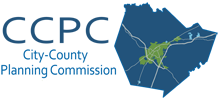There are many uncertainties for the future of transportation and with that comes a lot of unanswered questions. With a mere century of widespread public ownership of the automobile, our nation is faced with myriad challenges from funding infrastructure projects and drafting safety standards for autonomous vehicles, to incorporating “active” modes of travel and thinking beyond the realm of the actual roadway.
Of course, solving the problems of transportation are very complex and require a lot of support and money, both of which can be quite challenging to obtain. However, if as planners, developers, engineers, or everyday users we’re solely keeping our eyes on how we can fix the number of travel lanes within the right-of-way of a roadway, we might be missing a piece of the transportation puzzle. To take it a step further, it can be equated with choosing to “go through the motions”, carrying on with patterns of the past, or choosing to take risks and use intention when considering how we build our communities.
One article from CityLab delves into a term coined induced demand. The article discusses several major highway projects that cost billions of dollars, only to find the completed expansions brought about more vehicular travel and thus more congestion ensued. This is not to say that Bowling Green-Warren County should never widen a road again; we actually have a number of projects in the works for widening in response to growth, travel patterns, and safety concerns – the article is only stating that road widening in response to congestion might not always be the best solution for the community.

